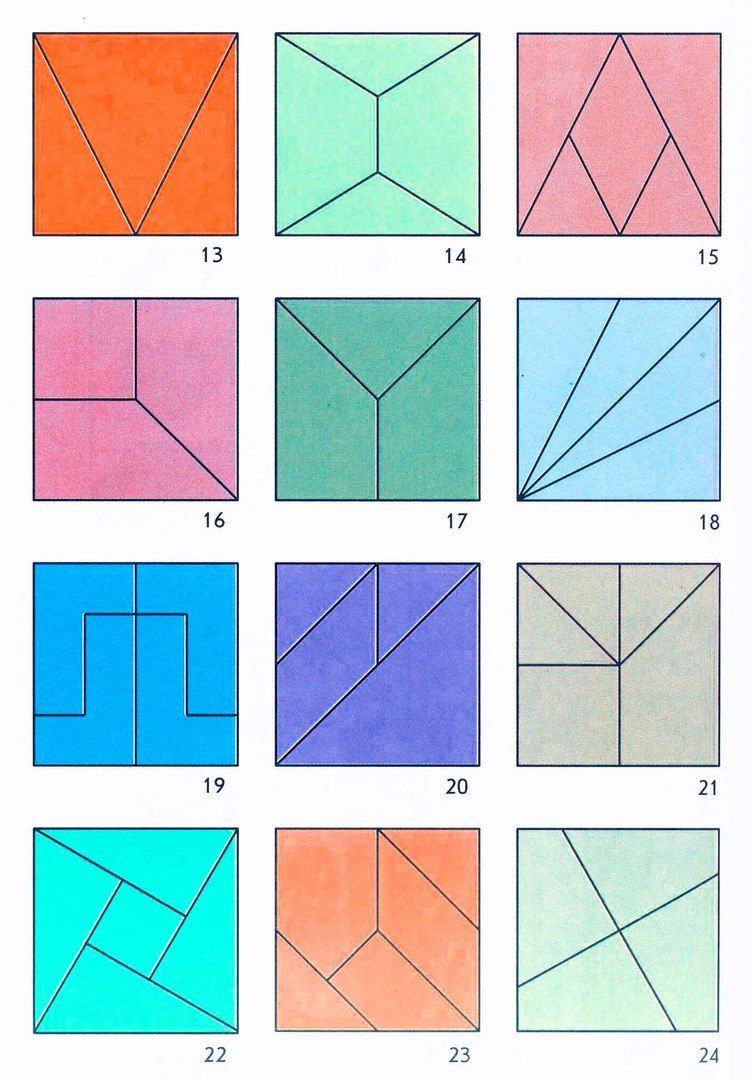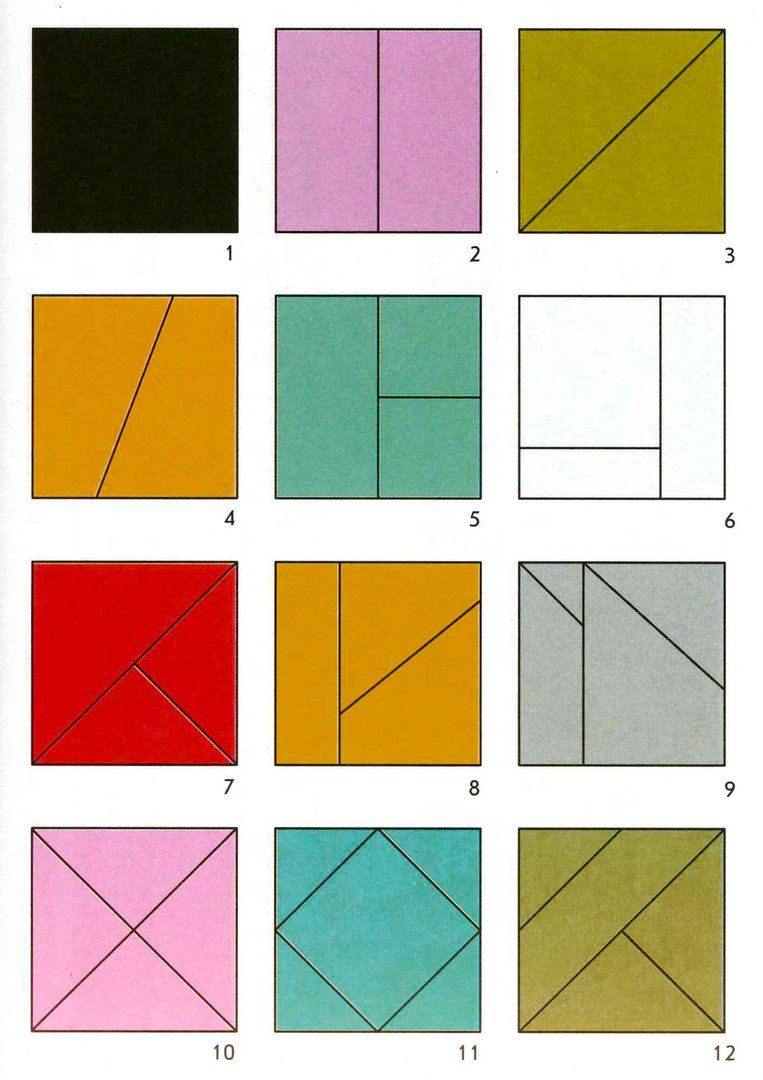“Fold the square” is the famous game of B.P. Nikitin for developing the intellectual potential of children.
The principle of the game resembles the addition of a puzzle - it is necessary to put together something whole from separate separate parts. This whole is each of the 24 squares that make up the game. The squares are painted in different colors, and the way they are cut varies from simple to complex.
The game is multi-level, the level of difficulty depends on the number of components. The simplest tasks (2-3 parts) can be offered to a child already from 2 years.
The game is not at all as simple as it seems at first glance - kids can solve these puzzles for several years. She teaches yourself to think, invent, create. During the game, the child comprehends such concepts as the part and the whole, actively developing the ability to synthesize and analyze, spatial imagination, learns to combine the details, collecting from them the whole, learns to develop the game algorithm, breaking the complex task into several simple steps.
Variants of the main tasks:
Sort all the pieces of cardboard by color and arrange them into 23 piles (the first square remains whole). At the same time, the child learns to distinguish both colors and their shades and, therefore, develops color perception..
Next, you need to correctly fold each square from each pile of pieces. It means to solve 23 problems of gradually increasing complexity. After all, the first 3 squares are cut into 2 parts, then 8 squares are already made up of 3 parts, then from 4 and, finally, from 5.
Gradually complicate the task. First give the child the details from one square. Then add details from the second, third, etc. - mix parts.
When a child learns to fold all the squares, you can interest him in the game "for a while".
Additional tasks:
You can focus on the development of imagination and creativity - suggest that the child, using all parts, “draw” animals, objects.
Have the child arrange the squares in the sequence of the solar spectrum (rainbow), decompose into cold and warm colors.
With the help of parts of different squares, you can fill in silhouettes drawn on paper.
Introduce the child with such a concept as symmetry. Lay out a simple figure, for example, an arrow, and have the child build his mirror image.
Practice your memory - build a figure, let your child look at it, and then change one detail, asking him to find out what exactly has changed.
Nikitin squares are easy to do by hand. To do this, cut out of colored paper 24 squares of different shades and stick them on the cardboard. Then cut each square into previously drawn lines..


Printable material here:
nikitin.pdf

